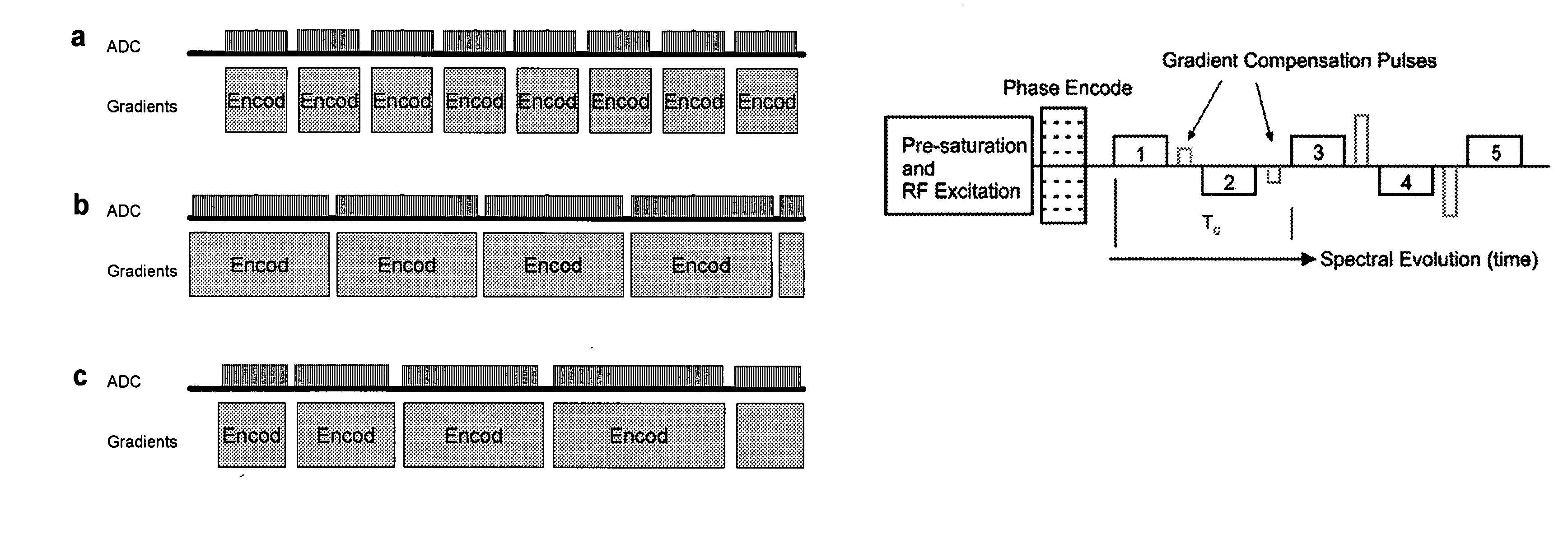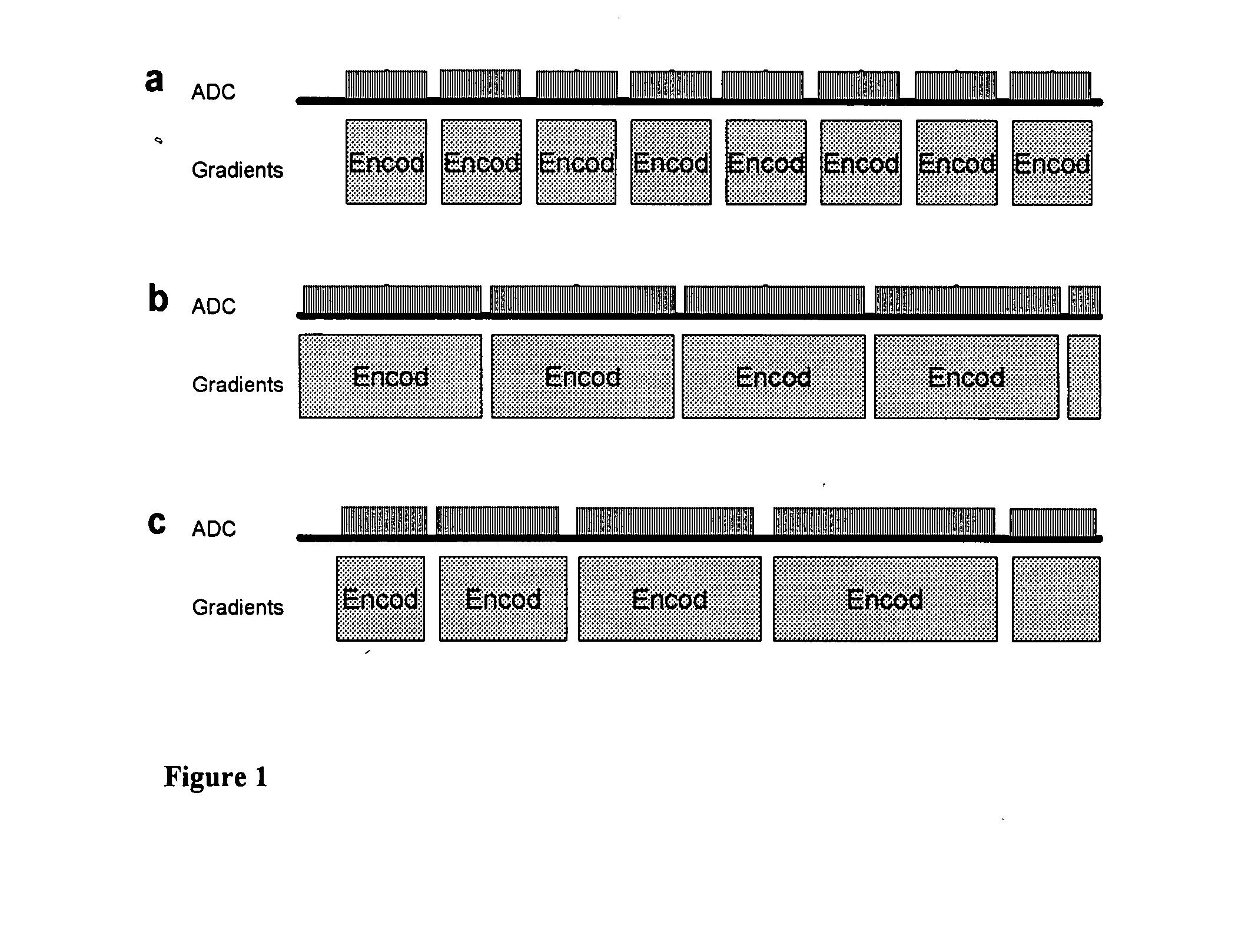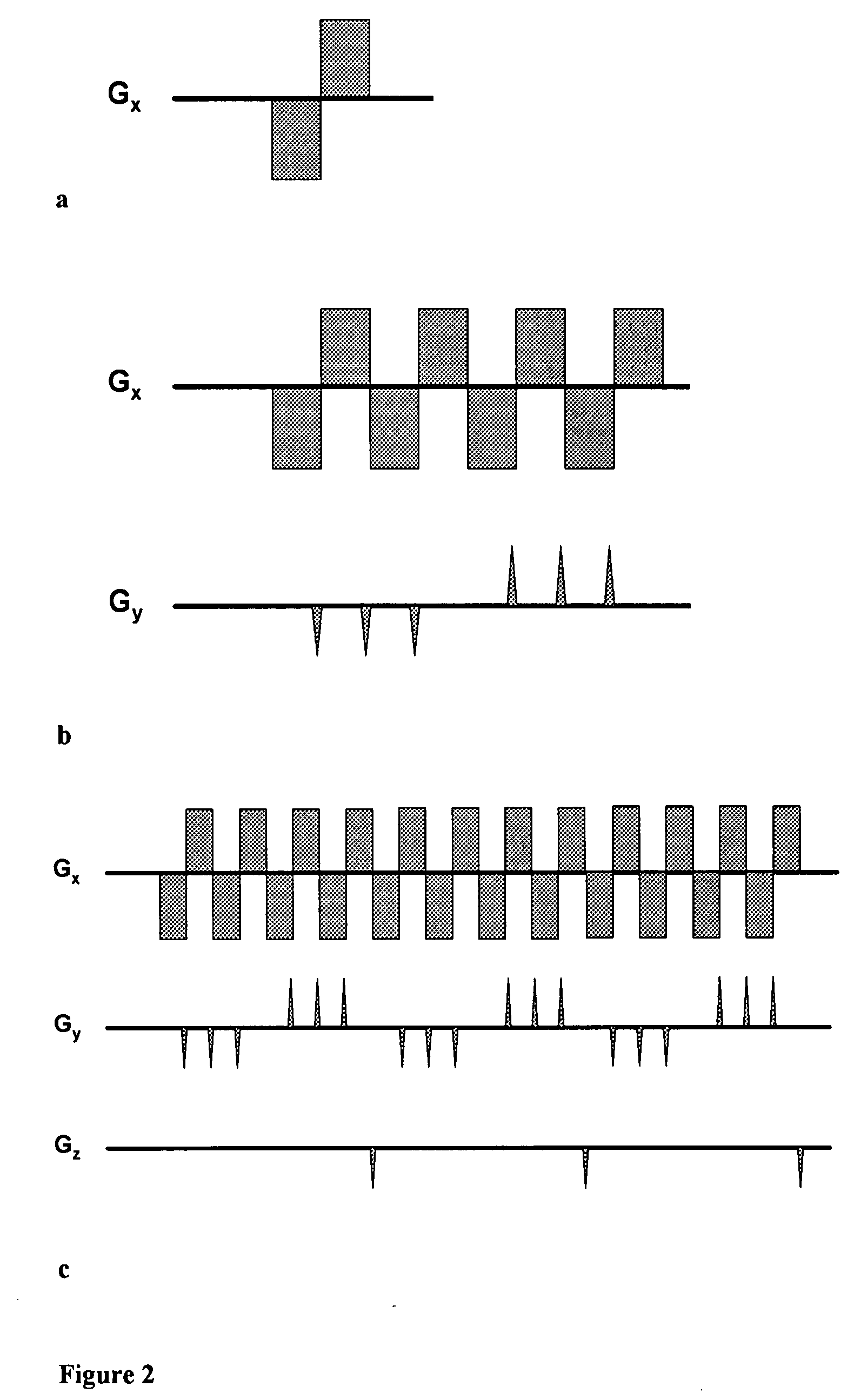Magnetic resonance spectroscopy with sparse spectral sampling and interleaved dynamic shimming
a dynamic shimming and sparse spectral technology, applied in the field of magnetic resonance spectroscopic imaging (mrsi), can solve the problems of considerable regional differences in magnetic field inhomogeneity and blurred images, and achieve the effects of maximizing spectral information content, data sampling efficiency and sensitivity, and minimizing the effect of local magnetic field gradients
- Summary
- Abstract
- Description
- Claims
- Application Information
AI Technical Summary
Benefits of technology
Problems solved by technology
Method used
Image
Examples
Embodiment Construction
[0086]In MRS and MRSI the dwell time for spectroscopic encoding depends on the nucleus. In proton spectroscopy the spectral range is rather narrow (9 ppm=380 Hz / Tesla) and the necessary dwell time to encode the entire spectral range is on the order of 1.75 ms at 1 Tesla and 0.88 ms at 3 Tesla, which are commonly used field strengths. This is sufficient time between spectral encoding points to interleave magnetic field gradient pulses (FIG. 1,2). This is now common practice for high-speed MRSI (e.g. 9,10). Sparse sampling can be implemented such that the spectral dwell time for linear time domain sampling is increased at the expense of spectral aliasing. A key element of this approach is to select the spectral dwell time such that minimal loss of spectral information is incurred in the aliased spectrum (FIG. 3,4). Aliased data may be reconstructed using constrained spectral models. Alternatively, non-uniform sampling of spectral data points in time can be used and this approach can b...
PUM
 Login to View More
Login to View More Abstract
Description
Claims
Application Information
 Login to View More
Login to View More - R&D
- Intellectual Property
- Life Sciences
- Materials
- Tech Scout
- Unparalleled Data Quality
- Higher Quality Content
- 60% Fewer Hallucinations
Browse by: Latest US Patents, China's latest patents, Technical Efficacy Thesaurus, Application Domain, Technology Topic, Popular Technical Reports.
© 2025 PatSnap. All rights reserved.Legal|Privacy policy|Modern Slavery Act Transparency Statement|Sitemap|About US| Contact US: help@patsnap.com



